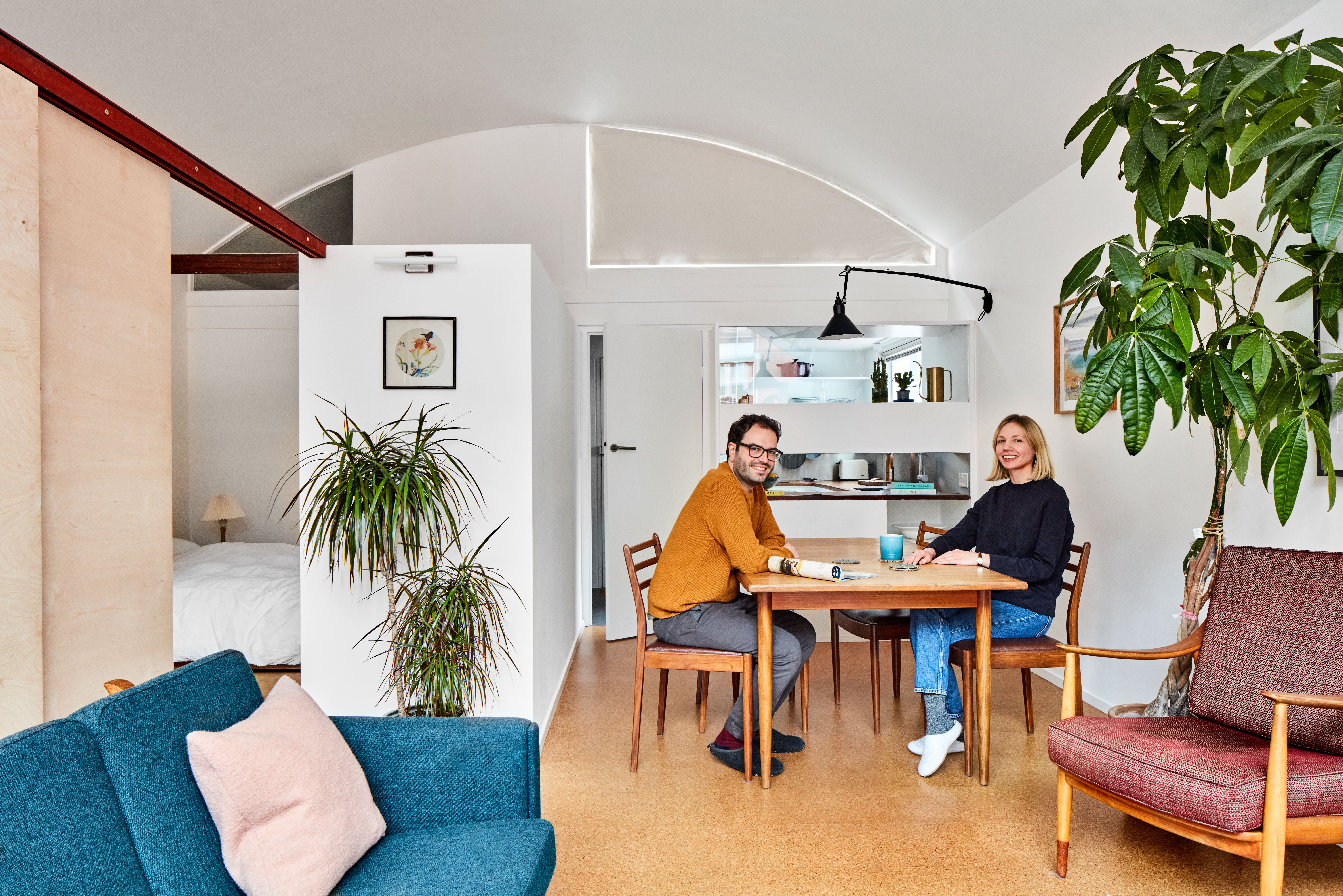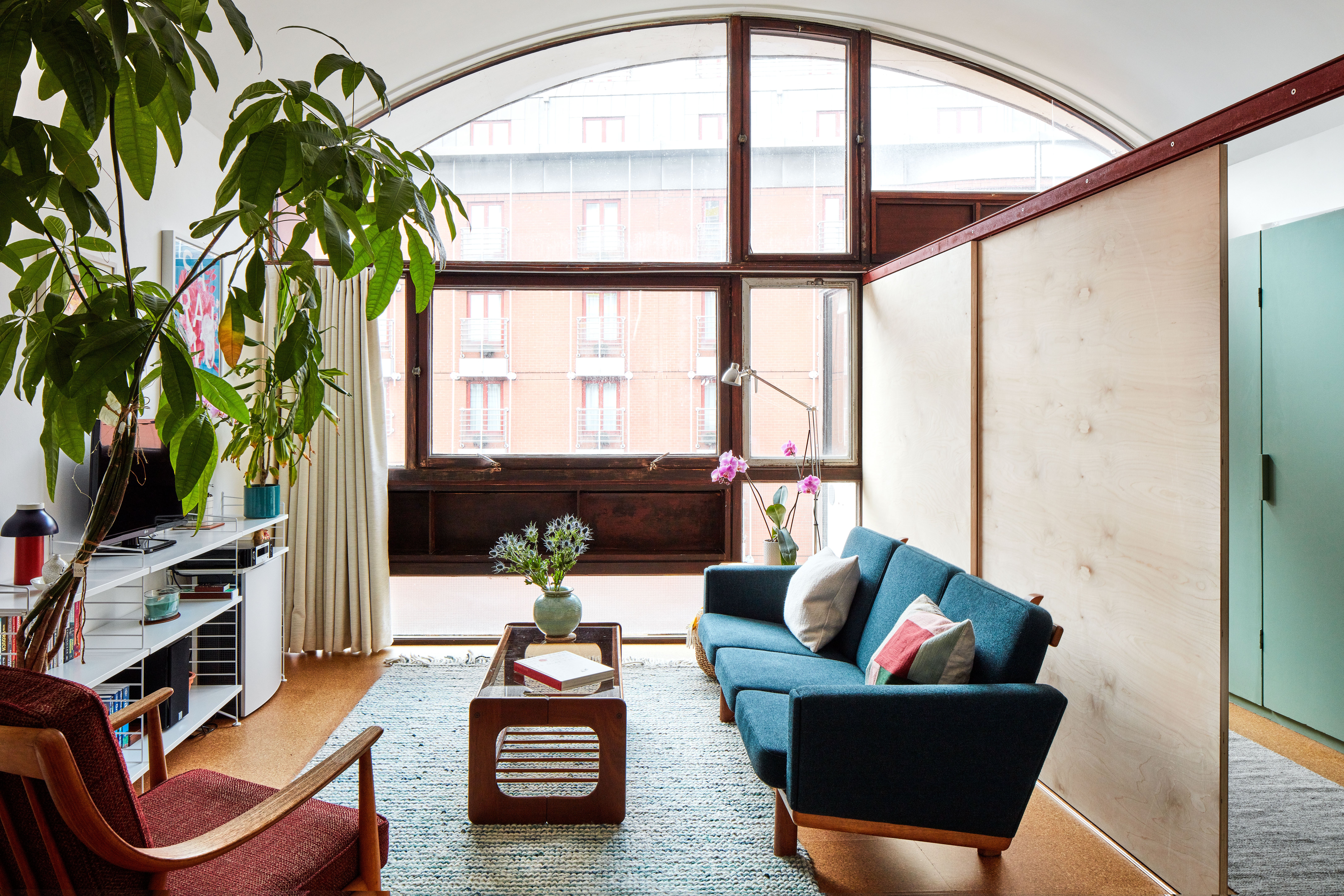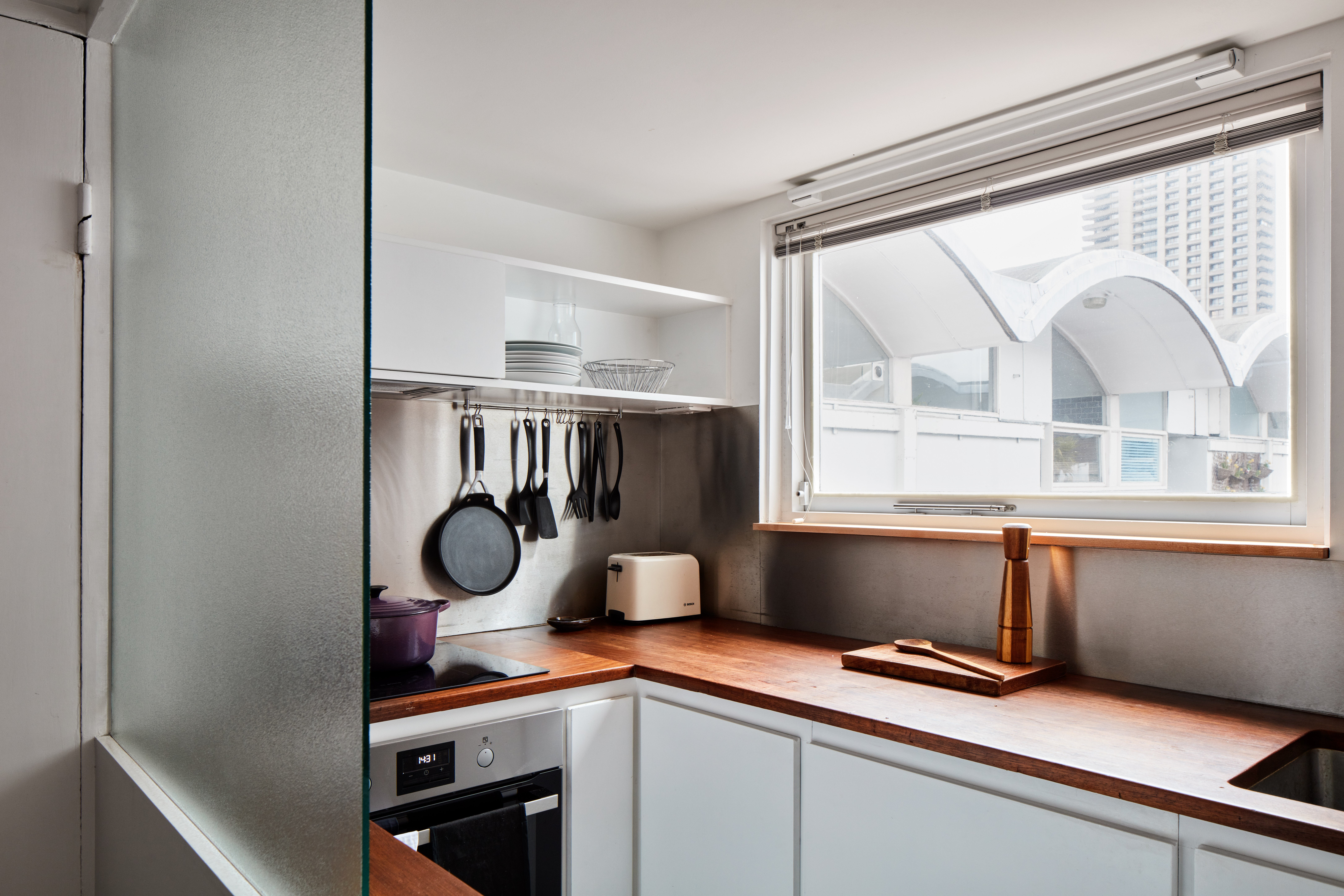
Small but mighty: Ogi Ristic and Hayley Smith’s transformed studio flat
(Picture: Juliet Murphy Photography)Architect Ogi Ristic fell in love with the City of London’s Grade II-listed Golden Lane Estate as a student when he was lucky enough to live there.
But a few years later when he was flat-hunting with his partner, Hayley Smith, they thought this Le Corbusier-inspired area would be well beyond their first-time buyer budget.
“I moved here in 2010, renting with some friends. It’s an architectural gem and so central, with an amazing community feel. But Hayley and I thought it would be out of our reach until we found this studio flat.”
Built in the 1950s, the estate was designed by Chamberlin, Powell and Bon — the architects who later went on to design the Barbican Estate — and was a model for social housing and urban living. This studio flat, on the top floor of the four-storey Crescent House, is a compact 45 square metres with a stunning vaulted ceiling. But the place was run-down.

“The bathroom was in a pretty terrible state and there was a sense that someone had lived here for many years, overloading it with too much stuff. But it was largely untouched and I felt that it just needed a few key changes to make a big difference,” says Ristic.
Insulation investment
The couple bought it in 2019 for £360,000 and lived here for six months while planning improvements. There was no insulation, so sorting out the cold and condensation was their top priority.
Ristic is co-founder of architecture practice Type, which prioritises environmental responsibility, and he previously worked as a project manager in his father’s Passivhaus construction business, so he is passionate about sustainability and energy-efficient materials.
It’s all about investing in the building fabric, things you never see but that make a home warm and comfortable
He opted to warm the place up with an ultra-thin Spacetherm insulation, because the thicker standard version would have messed up the penthouse’s carefully thought-out design angles and points of reference. But it was expensive and gobbled up about £5,000 of their £30,000 budget. “It was all about investing in the building fabric, the things you never see but that make a home warm and comfortable.”
Underfloor heating took up another £4,000 of the budget. “The previous owner had installed radiators but we wanted to return the place to its original look and gain the extra space that going radiator-free would give us,” says Ristic.
There was no space for a washing machine, so at first their machine was stuck in the hallway with pipes snaking into the bathroom, before they created a generously sized laundry cupboard by rejigging the communal pipework. This is now home to the washing machine as well as essentials such as cleaning products and the vacuum cleaner.
The details
Property: a 45msq 1950s studio
Cost: £360,000
Renovation budget: £30,000
Ristic also enhanced the sense of light and space back here by replacing the original wall on to the kitchen with a panel of glass, from worktop height up, with a new bank of slimline storage below.
Ristic struck up a great relationship with the City of London’s planning and listed building teams, which appreciated his respect for the original architecture. The couple chose to stay with friends in Walthamstow while the worst of the work was happening. Then the first lockdown struck and video calls had to take the place of most of the site visits. “We sorted everything in the end, even though we ended up staying with our very accommodating friends for 12 weeks instead of the planned six.”
Masterful zoning
The layout of these studio flats was carefully planned by the original architects and still works well. The entrance hall, flanked by the kitchen and bathroom, has two doors, which open on to the partitioned-off bedroom and the main dining/living space.
The kitchen now features simple bespoke cabinets in white-painted EcoBoard and hardwearing teak worktops, made using reclaimed school desks. This space is linked to the dining area through a pair of horizontal glass panels. “In a studio apartment, it’s actually quite good that the kitchen has its own space.”
The couple like to entertain and were keen to make the flat work for overnight visits from friends and family, too. Their own bedroom has doors on to both the main space and the hallway, meaning that when guests are staying in the living area, all the occupants can access the bathroom without disturbing each other.

Chamberlin, Powell and Bon provided a bank of wardrobes in the main room, next to the bedroom. Ristic installed three sliding veneered-birch panels to create a more flexible solution that creates a private dressing room whenever it’s needed and more space when it isn’t.At the end of the wardrobes he created a study area in front of the oriel window, with a bespoke desk made from white-finished birch ply. “It was an underused space before but it has been so useful during the work-from-home restrictions.
With the dining table, we now have two work areas, which is impressive in what is ostensibly a studio flat.” The birch sits comfortably in the palette of natural and affordable materials, along with the cork tile flooring, from Puretree Cork. Using inexpensive finishes like these has helped balance the budget. “The flooring is warm and suits the utilitarian aesthetic of the flat.”
The small bathroom was another area where the couple spent big, laying down about £4,000, much of it on Duravit and Bette sanitaryware and Crosswater taps. “It was important for us to invest up front on good quality bathroom fittings, simply because they last longer.” They also used reasonably priced sustainable tiles in shades of off-white and soft green, from Mosa. The bathroom is lit only by a high-level glass panel, bordering the main room, so Ristic devised a large mirrored bathroom cabinet to make the most of the light and increase the sense of space here.
Keeping it flexible
The couple’s furniture was chosen to reflect the mid-century aesthetic of this estate and to work well in a small flat, while vintage pieces also ticked the sustainability box. The G Plan dining table can extend when the couple are entertaining, while the spare chairs double up at the desk.

The sofa is a compact design, a Hans Wegner piece that was sourced on Danish eBay and had reupholstered with a teal blue Kvadrat fabric, to play off the sage green that the couple chose to paint the bank of wardrobes, “for a simple, utilitarian feel”.
To keep the stunning vaulted ceiling looking pristine, Ristic had to be clever about lighting the flat. Concealed strips on top of the bedroom and dressing room partitions provide functional background light that’s great for working at home on winter days.

The lounge area is zoned with a simple floor light and strategically-placed indoor plants, while a telescopic wall light by DCW Éditions creates a warm halo around the dining table.
“When you’re living in a small flat, versatile lighting allows you to transform the space in different ways. We were keen that everything we did maximised the flat in a simple and cost-effective way, to create a comfortable environment for us and for future users of this space.”
Get the look
- Fusion Basin two-hole set, £135, Crosswater
- Lampe Gras No 213, by DCW Editions, £413, at Nest
- Victor Wilkins for G Plan dining chairs, £990 for set of six, at Vinterior
- Hans J. Wegner three-seat sofa, £2,937, 1stDibs
- Dragon plant ‘Flick’, £5 to £60, at Patch







